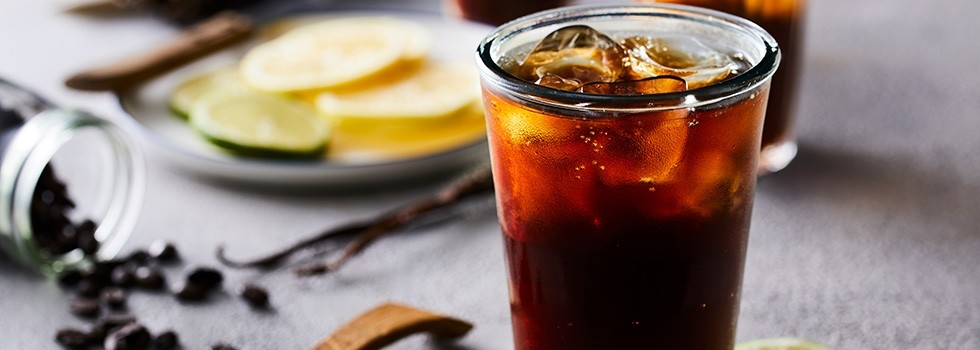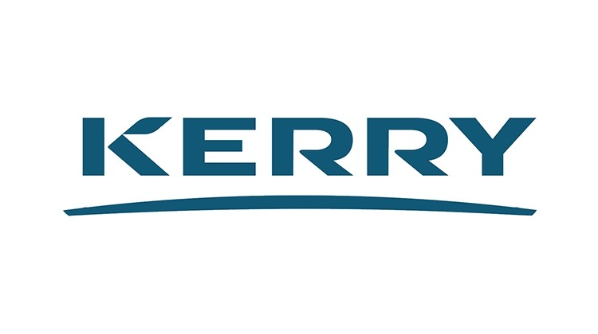Promotional Features
The quest for health: how beverage brands can conquer the ‘better-for-you’ market
Author: Gordon Eng | General Manager Taste APAC at Kerry
Consumer demand for ‘better-for-you’ beverages is on the rise. According to Innova Market Insights, consumption of functional beverages rose from 12.6% to 27.2% between 2012 and 2016, whilst in Asia Pacific the non-alcoholic segment of the beverage taste modulator market alone is expected to grow to $169.5m by 2023, according to a recent report from MarketsandMarkets.
In Asia Pacific, the Middle East and Africa (APMEA), the popularity of ‘better-for-you’ beverages is being driven by a number of macro trends. Firstly, the region’s aging population and rising levels of type 2 diabetes are encouraging individuals to pay much more attention to their diet. The World Health Organization predicts that by 2025 India and China alone may account for up to 50m cases of diabetes and, with Asia also poised to be home to 61% of the global older population by 2050, this trend looks set to continue.
The free-from movement has also gained a foothold in recent years and, because many consumers are avoiding more than one ingredient, it is now commonplace to see product launches with multiple free-from claims.
At the same time, regulations are being introduced across APMEA to reduce the sugar content of drinks. In May, Saudi Arabia became the latest in a growing list of countries to announce an excise tax on all drinks with added sugar and, with countries in the Middle East reporting some of the fastest growing obesity rates in the world, it is likely to be only a matter of time before other members of the Gulf Cooperation Council pass “sin taxes” that include sugary drinks too.
In Asia, Thailand, Sri Lanka, Malaysia, the Philippines and Brunei have all introduced a Sugar Sweetened Beverage (SSB) tax in the past two years, while a number of other countries – including Vietnam, Australia, New Zealand and Singapore – are also considering it.
Faced with this ‘push’ of government regulation and ‘pull’ of rising consumer demand for healthier choices, there is a mounting commercial and legal imperative for APMEA’s drinks manufacturers to pay closer attention to the nutritional properties of their products.
For any drinks brands that are going down the reformulation route, there are three considerations that should be front of mind:
Reducing sugar without compromising on quality
While nutrition is paramount, consumers are not willing to compromise on taste so the success of reduced-, low- and no-sugar drinks is dependent on a brand’s ability to maintain product quality.
As well as flavour, sugar also plays an important role in texture, color, viscosity, mouthfeel and aroma too, so when manufacturers remove or reduce sugar, they need to take steps to preserve these qualities, whilst at the same time masking bitterness and off-notes which may increase when sweetness levels are reduced.
There are a range of sugar alternatives that brands can consider. Artificial sweeteners such as aspartame, saccharin and sucralose were once popular because they are sweeter than sugar but lower in calories. However, with the ‘clean label’ movement taking hold in APMEA, there is now an emerging preference for natural sweeteners like honey and agave instead. These ingredients can have their own limitations too; natural sweeteners can add bitterness and metallic off-notes to a product.
This is where taste modulators come in. Taste modulators, such as Kerry’s TasteSense Sweet, modulate the overall taste profile in the finished product.
Functional fortification
While manufacturers are looking to reduce the sugar content of their beverages, they should also think how they can fortify their drinks with healthier ingredients.
Options for fortification are numerous – from proteins, probiotics and prebiotics, to fibre and flavonoids – and it can be a lucrative marketing tool for manufacturers to differentiate and attract ‘new’ customer segments.
Probiotic food and drinks are becoming increasingly popular and are one area where we see a big opportunity for fortification. There is an opportunity for beverage brands to move beyond traditional products, like yoghurt and fermented culture drinks, and branch into new categories such as tea bags and flavoured water. Our proprietary GanedenBC30 probiotic ingredient can add digestive, immune and protein utilisation support to beverage products and, crucially, is highly stable meaning that it is viable through most manufacturing processes and can endure high temperatures allowing it to be used in categories like teabags.
Fortification can even be applied to improve products that have been reformulated in other ways. For example, lactose intolerance is high among some subgroups in Asia so lactose-free products are a burgeoning market. Brands that can fortify their lactose-free products to include easily absorbable calcium will have a new unique selling proposition.
Kerry offers a wide range of fortification ingredients, each with their own nutritional and functional benefits. Functional properties can range from stability and shelf-life to an ingredient’s ability to withstand manufacturing and food preparation processes, such as boiling, and can therefore be just as important as nutritional properties when a manufacturer is deciding which fortification ingredients to use.
Catering for ‘clean label’ conscious consumers
APMEA consumers are more educated than ever about the contents of their food and drink. Having first taken off in the West, the ‘clean label’ movement has now taken root in APMEA, with a growing number of shoppers wanting to know what is in their products and preferring to buy food and beverages that contain natural, familiar and simple ingredients.
It is comparatively easy for new products to be created with clean labels, but it can be much harder to do so for established products. Often this has to be done one ingredient at a time. The starting point for any beverage brand should be to identify the right clean label strategy for them and decide whether to reformulate or innovate.
The presence and acceptance of certain ingredients varies by product category as well. For instance, high levels of sugar are more widely accepted in ice creams, but much less so in carbonated soft drinks. Beverage manufacturers need to be aware that some ingredients – such as high fructose corn syrup and monosodium glutamate – are deemed clear negatives by the clean label movement, whereas there are other ingredients that can simply differentiate products and brands as clean, cleaner and cleanest.
Consumer preconceptions and expectations about certain ingredients are constantly changing, so manufacturers need to keep abreast of the latest trends and pay attention to local nuances that will occur in diverse regions like APMEA. Manufacturers may also need to invest in educating consumers about the health benefits of ingredients that have been added to fortify the product, particularly if they are uncommon ingredients.
Overall there is a huge opportunity for manufacturers to not only retain, but to also grow their market share in APMEA by catering to the growing demand for ‘better-for-you’ beverages, so long as they can maintain product quality and clearly communicate the benefits of fortification to today’s better-informed consumers.
On 3 July, Kerry’s ‘Healthier Beverages: The Quest for Health’ webinar provided details on how beverage manufacturers can conquer the ‘better-for-you’ market. If you missed the webinar, you can view the on-demand webinar at following link: http://bit.ly/healthierbeverage-FNAarticle.

